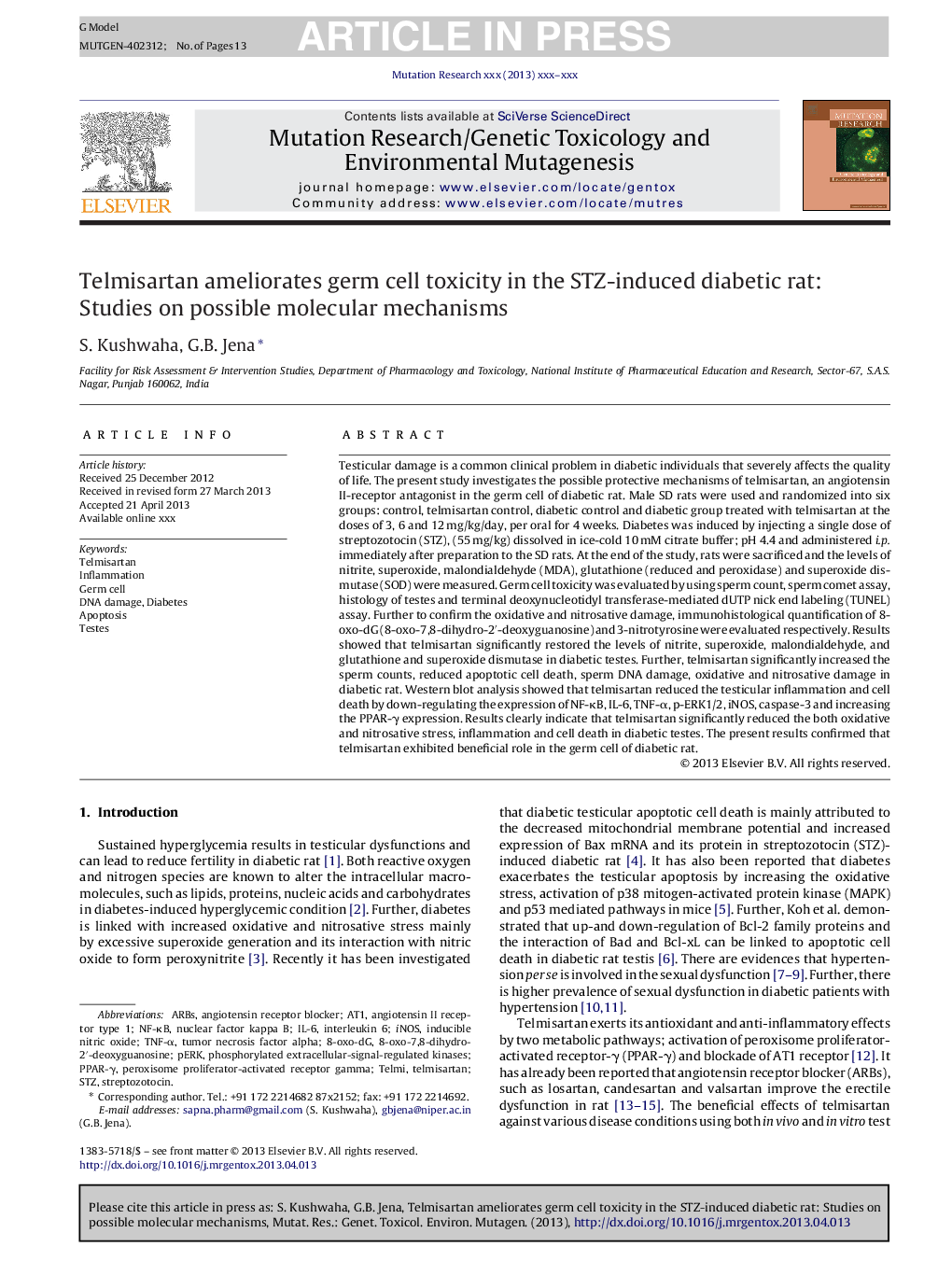| Article ID | Journal | Published Year | Pages | File Type |
|---|---|---|---|---|
| 10914975 | Mutation Research/Genetic Toxicology and Environmental Mutagenesis | 2013 | 13 Pages |
Abstract
Testicular damage is a common clinical problem in diabetic individuals that severely affects the quality of life. The present study investigates the possible protective mechanisms of telmisartan, an angiotensin II-receptor antagonist in the germ cell of diabetic rat. Male SD rats were used and randomized into six groups: control, telmisartan control, diabetic control and diabetic group treated with telmisartan at the doses of 3, 6 and 12 mg/kg/day, per oral for 4 weeks. Diabetes was induced by injecting a single dose of streptozotocin (STZ), (55 mg/kg) dissolved in ice-cold 10 mM citrate buffer; pH 4.4 and administered i.p. immediately after preparation to the SD rats. At the end of the study, rats were sacrificed and the levels of nitrite, superoxide, malondialdehyde (MDA), glutathione (reduced and peroxidase) and superoxide dismutase (SOD) were measured. Germ cell toxicity was evaluated by using sperm count, sperm comet assay, histology of testes and terminal deoxynucleotidyl transferase-mediated dUTP nick end labeling (TUNEL) assay. Further to confirm the oxidative and nitrosative damage, immunohistological quantification of 8-oxo-dG (8-oxo-7,8-dihydro-2â²-deoxyguanosine) and 3-nitrotyrosine were evaluated respectively. Results showed that telmisartan significantly restored the levels of nitrite, superoxide, malondialdehyde, and glutathione and superoxide dismutase in diabetic testes. Further, telmisartan significantly increased the sperm counts, reduced apoptotic cell death, sperm DNA damage, oxidative and nitrosative damage in diabetic rat. Western blot analysis showed that telmisartan reduced the testicular inflammation and cell death by down-regulating the expression of NF-κB, IL-6, TNF-α, p-ERK1/2, iNOS, caspase-3 and increasing the PPAR-γ expression. Results clearly indicate that telmisartan significantly reduced the both oxidative and nitrosative stress, inflammation and cell death in diabetic testes. The present results confirmed that telmisartan exhibited beneficial role in the germ cell of diabetic rat.
Keywords
Related Topics
Life Sciences
Biochemistry, Genetics and Molecular Biology
Cancer Research
Authors
S. Kushwaha, G.B. Jena,
